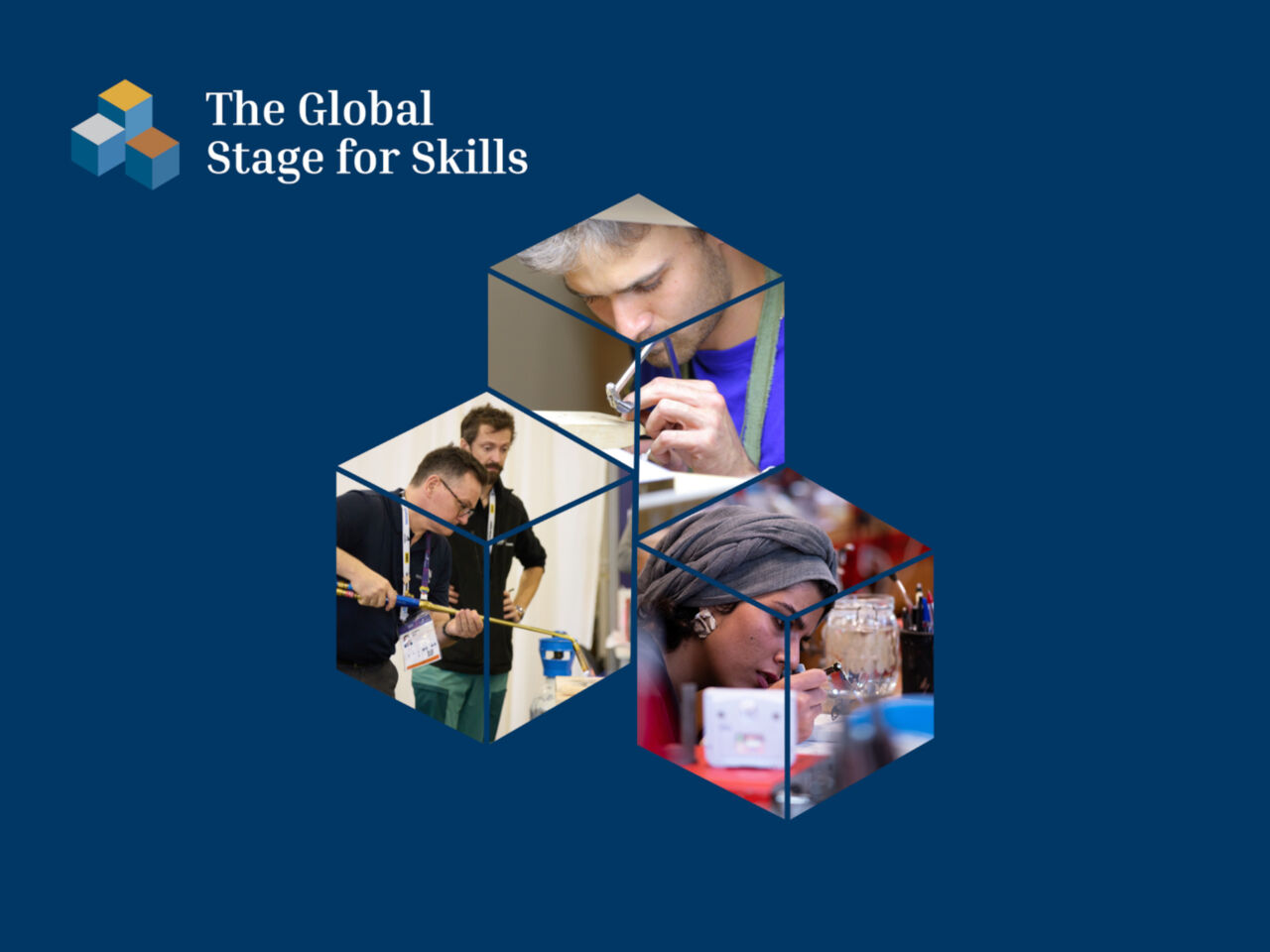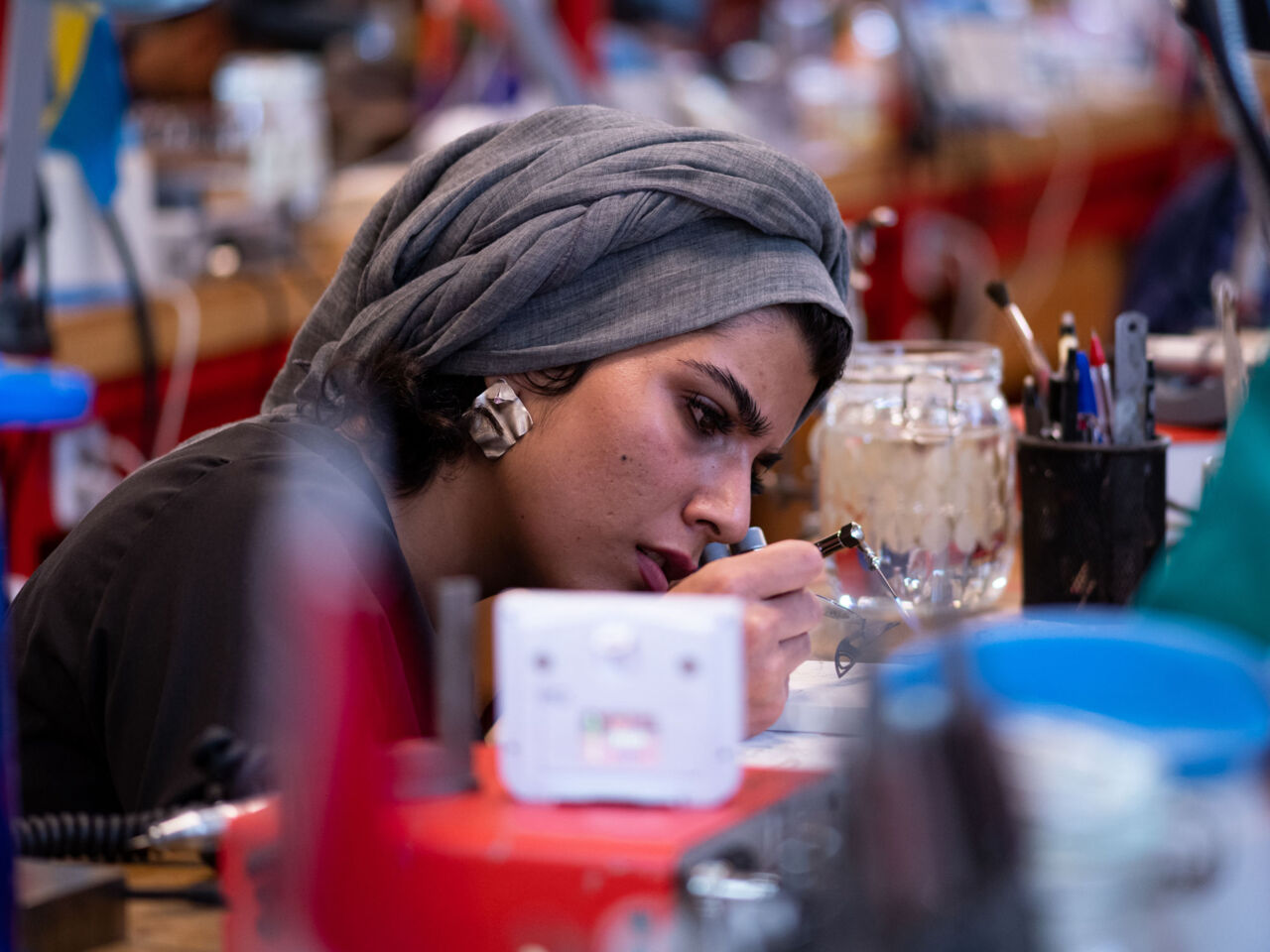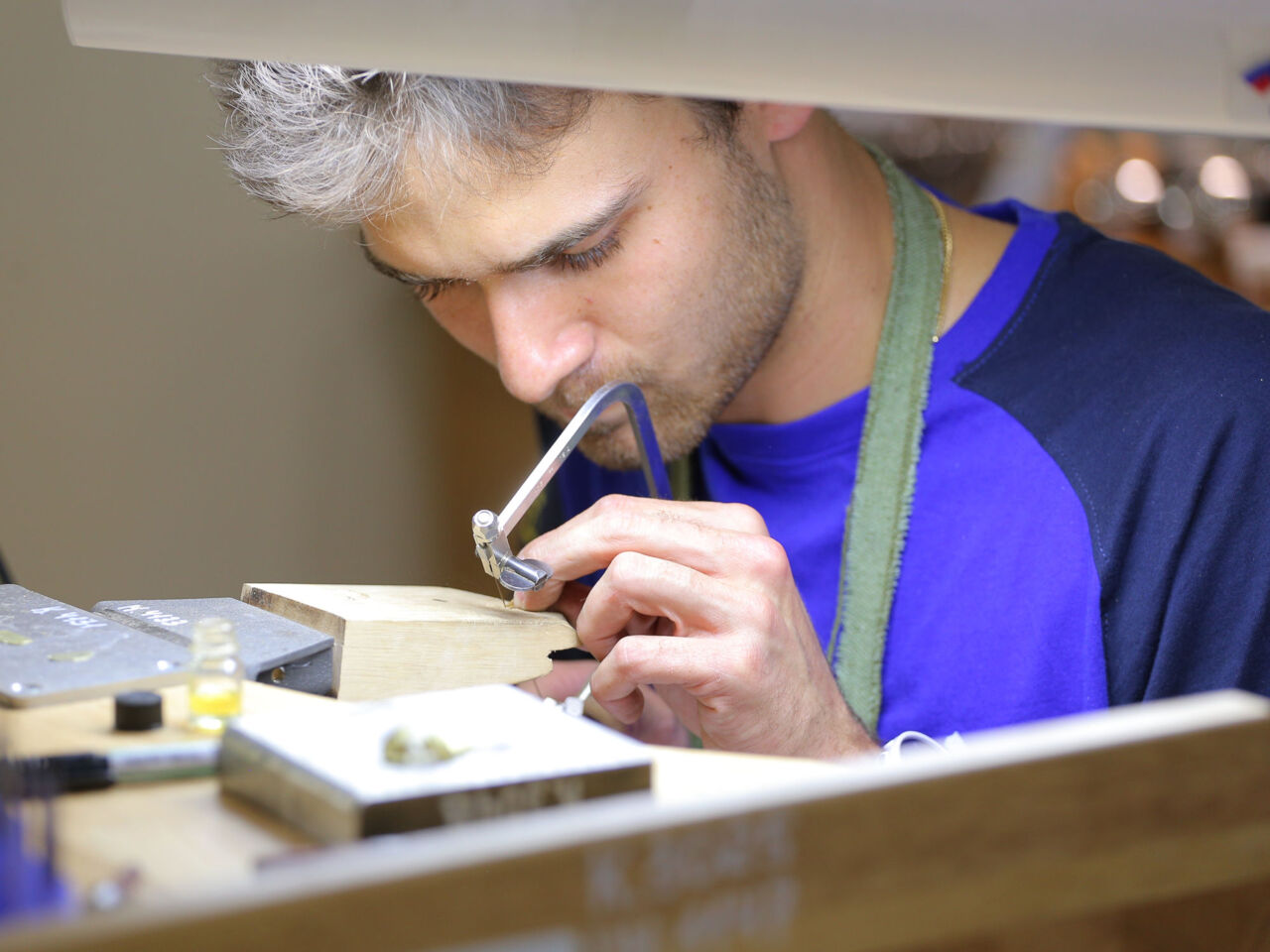19 June 2025
Spotlight on… Jewellery
From hand-forged gold to 3D modelling, Competitors in jewellery must master time-honoured techniques and cutting-edge technology on the global stage for skills.

Desired, treasured, shared: jewellery has played an important role in people’s lives over centuries. This enduring appeal explains the industry’s robust performance. In 2024, Fortune Business Insights estimated the global jewellery market to be worth over $200 billion, and growing at a rate of 5% per year.
Darren May, Skill Competition Manager for Jewellery, reflects, “The apex of excellence is the ability for a human to take precious materials in their hands and produce a beautiful piece of jewellery that’s going to be owned forever.”
Creating such lasting and special items requires a blend of precision, innovation, and imagination. Skills that are all tested at a WorldSkills Competition. Darren says, “We want to see how Competitors cut the metal with saw frames. We want to see them use hammers and forming stakes to give the piece shape and form, and soldering torches to join pieces together. We want to see the crisp lines and nice sharp edges.”
Handcrafting skills have long been central to WorldSkills Jewellery Test Projects, but, in recent WorldSkills Competitions, Experts have started to introduce automation and AI-driven tools into the workshops. Darren says, “I love the fact that we honour traditional craft, but we’re also really eager to use new technology.”
He explains, “It’s now commonplace in our industry to 3D model something before producing it in gold. At WorldSkills Shanghai 2026, we’ll be using laser welders for the first time ever. That is a reflection of what is happening in industry today, and it excites me. The future of jewellery could be so amazing for young people.”
At the last three WorldSkills Competitions, increasing emphasis has also been given to evidence of personal expression.
A creative module was introduced at WorldSkills Kazan 2019 asking Competitors to interpret a client brief as if they were responding to a real-world commission. Darren explains, “The brief outlines the client’s expectations, and then Competitors incorporate their own brilliance into the final piece.”
At WorldSkills Lyon 2024, the Test Project was inspired by the blue wren, a small, vivid Australian bird. Competitors were then given the freedom to design the tail section themselves. This segment became a powerful reflection of each artisan’s cultural identity. Darren recalls, “You could see regional aesthetics in each piece.”

One standout example was the piece crafted by Raziyeh Jalili from WorldSkills Iran at WorldSkills Competition 2022 Special Edition. Its integration of technical skill with her cultural background secured her a place in WorldSkills history as the first woman to win a gold medal in Jewellery.
Raziyeh described her work as “quintessentially Iranian”. It depicted a woman with flowing hair symbolizing beauty, strength, and freedom, and peaceful eyes reflecting hope. Raziyeh considered her Competition piece to be a universal message and not just a technical achievement, embodying both her personal story and a call for dignity and recognition.
Another Competitor, Louis Dauxais-De Ryck from WorldSkills France, competed at WorldSkills Kazan 2019. His favourite part of the Competition was the creative module saying, “That was the moment you express yourself and get the occasion to be different.” Inspired by Fabergé, Art Deco, and the Parisian cabaret, Louis’s design was a fusion of architectural and musical influences.

Last year’s WorldSkills Competition in Lyon saw sustainable practices embedded into all Test Projects. For Jewellery, this meant encouraging Competitors to think about the sourcing of precious materials and improving their gold return. Darren explains, “As Skill Competition Manager, I must be confident that the gold has been ethically sourced and sustainably processed.”
He adds, “As a team of Experts, we also need to impress on Competitors that they must minimize waste. They need to be careful about how they manage their gold – not only the finished piece, but all of their scrap gold at the end. If they have a higher gold return, they earn more marks for that. They are showing that they are highly skilled, incredibly organized, and sustainably minded.”
Jewellery, as a skill competition, is a celebration of precision, innovation, creativity, cultural identity, and the timeless human desire to create objects of beauty and meaning. As Louis, Raziyeh, and countless others continue to shape the craft, they ensure that Jewellery remains both an ancient art and a skill for the future.